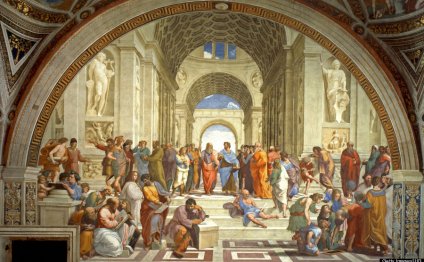
One of the Renaissance most important painters
The Spanish Golden Age (Spanish: Siglo de Oro, "Golden Century") is a period of flourishing in arts and literature in Spain, coinciding with the political rise and decline of the Spanish Habsburg dynasty. El Siglo de Oro does not imply precise dates and is usually considered to have lasted longer than an actual century. It begins no earlier than 1492, with the end of the (Reconquest), the sea voyages of Christopher Columbus to the New World, and the publication of Antonio de Nebrija's (Grammar of the Castilian Language). Politically, it ends no later than 1659, with the Treaty of the Pyrenees, ratified between France and Habsburg Spain. The last great writer of the period, Pedro Calderón de la Barca, died in 1681, and his death usually is considered the end of El Siglo de Oro in the arts and literature.
The Habsburgs, both in Spain and Austria, were great patrons of art in their countries. El Escorial, the great royal monastery built by King Philip II, invited the attention of some of Europe's greatest architects and painters. Diego Velázquez, regarded as one of the most influential painters of European history and a greatly respected artist in his own time, cultivated a relationship with King Philip IV and his chief minister, the Count-Duke of Olivares, leaving us several portraits that demonstrate his style and skill. El Greco, another respected artist from the period, infused Spanish art with the styles of the Italian renaissance and helped create a uniquely Spanish style of painting. Some of Spain's greatest music is regarded as having been written in the period. Such composers as Tomás Luis de Victoria, Cristóbal de Morales, Francisco Guerrero, Luis de Milán and Alonso Lobo helped to shape Renaissance music and the styles of counterpoint and polychoral music, and their influence lasted far into the Baroque period which resulted in a revolution of music. Spanish literature blossomed as well, most famously demonstrated in the work of Miguel de Cervantes, the author of . Spain's most prolific playwright, Lope de Vega, wrote possibly as many as one thousand plays during his lifetime, of which over four hundred survive to the present day.
Painting[edit]
Spain, in the time of the Italian Renaissance, had seen few great artists come to its shores. The Italian holdings and relationships made by Queen Isabella's husband and later Spain's sole monarch, Ferdinand of Aragon, launched a steady traffic of intellectuals across the Mediterranean between Valencia, Seville, and Florence. Luis de Morales, one of the leading exponents of Spanish mannerist painting, retained a distinctly Spanish style in his work, reminiscent of medieval art. Spanish art, particularly that of Morales, contained a strong mark of mysticism and religion that was encouraged by the counter-reformation and the patronage of Spain's strongly Catholic monarchs and aristocracy. Spanish rule of Naples was important for making connections between Italian and Spanish art, with many Spanish administrators bringing Italian works back to Spain.
El Greco[edit]
Known for his great impact in bringing the Italian Renaissance to Spain, El Greco (which means "The Greek") was not Spanish, having been born Domenikos Theotokopoulos in Crete. He studied the great Italian masters of his time - Titian, Tintoretto, and Michelangelo - when he lived in Italy from 1568 to 1577. According to legend, he asserted that he would paint a mural that would be as good as one of Michelangelo's, if one of the Italian artist's murals was demolished first. El Greco quickly fell out of favor in Italy, but soon found a new home in the city of Toledo, in central Spain. He was influential in creating a style based on impressions and emotion, featuring elongated fingers and vibrant color and brushwork. Uniquely, his works featured faces that captured expressions of sombre attitudes and withdrawal while still having his subjects bear witness to the terrestrial world. His paintings of the city of Toledo became models for a new European tradition in landscapes, and influenced the work of later Dutch masters. Spain at this time was an ideal environment for the Venetian-trained painter. Art was flourishing in the empire and Toledo was a great place to get commissions.
best online poker site https://pokeriran.jimdofree.com online poker
YOU MIGHT ALSO LIKE



Share this Post
Related posts
Paintings of the Renaissance period
We all know what the Renaissance was, correct? Michelangelo, Leonardo, Raphael and company created some fabulous paintings…
Read MoreImages of the Renaissance period
A Madonna (Italian: ) is a representation of Mary, either alone or with her Child Jesus. These images are central icons for…
Read More





